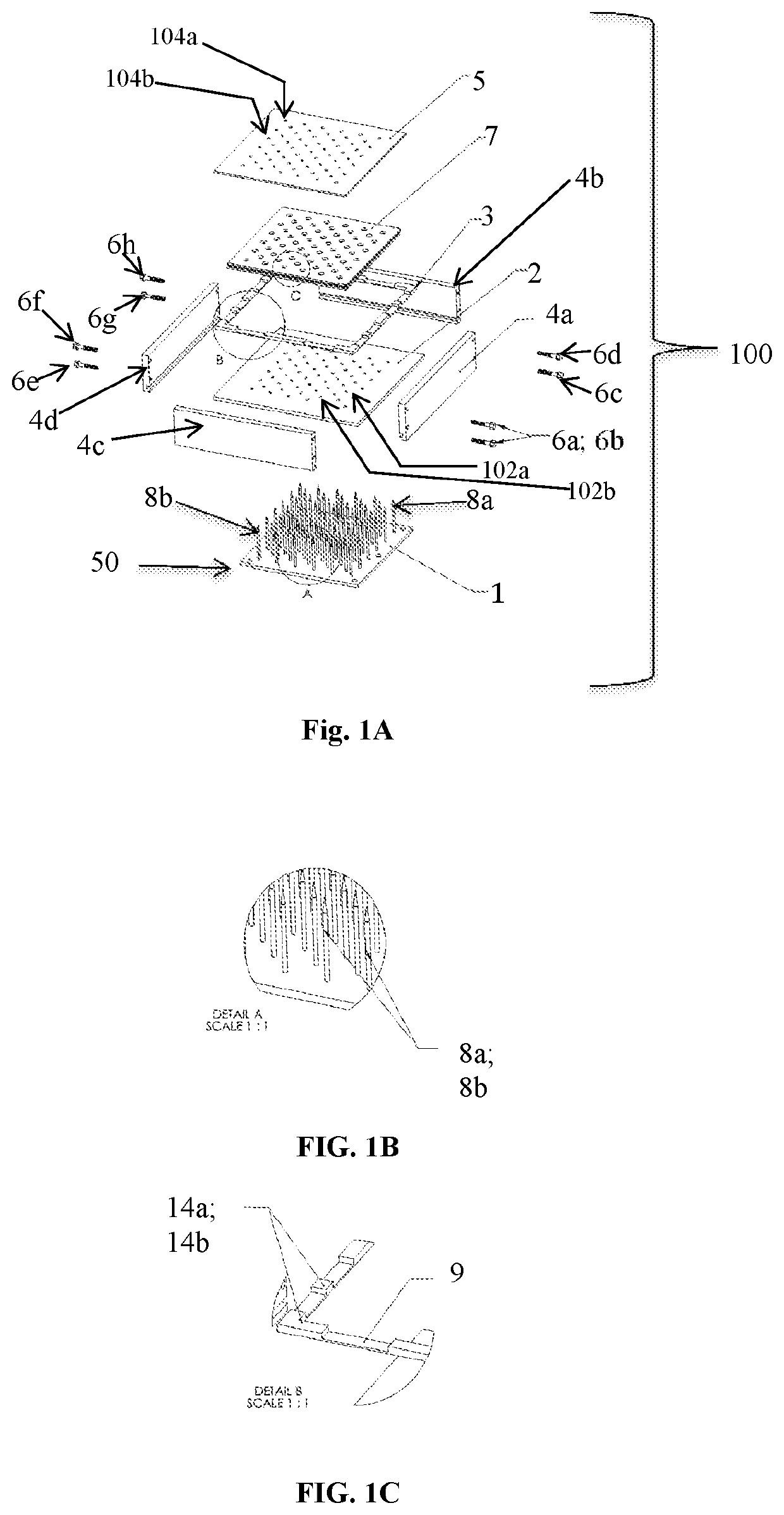Methods to produce perforated collagen coated surgical meshes
a collagen coating and mesh technology, applied in the field of surgery, can solve the problems of difficult control of the thickness of the collagen coating, too much collagen being stripped from the fabric or too little, and the possibility of fluid pockets in the coating of the mesh, etc., to achieve the effect of rapid incorporation into the host tissue and minimization of the formation of fluid pockets
- Summary
- Abstract
- Description
- Claims
- Application Information
AI Technical Summary
Benefits of technology
Problems solved by technology
Method used
Image
Examples
example 1
on of P4HB Monofilament by Melt Extrusion
[0113]Bulk poly-4-hydroxybutyrate (P4HB) resin in pellet form was dried to under 300 ppm water using a rotary vane vacuum pump system. The dried resin was transferred to an extruder feed hopper with nitrogen purge to keep the pellets dry. The pellets were gravity fed into a chilled feeder section and introduced into the extruder barrel, which was 1.50 inches in diameter and fitted with an extrusion screw with a 30:1 L / D ratio. The extruder barrel contained 5 heating zones (or extrusion zones)—zones 1, 2, 3, 4 and 5, and was manufactured by American Kuhne. The heated and softened resin from the extruder was fed into a heated metering pump (melt pump) and from the melt pump the extruded resin was fed into the heated block and an eight-hole spinneret assembly. Processing profile ranges from 40° C. to 260° C. for temperatures, and 400 psi to 2000 psi for pressures, were used. The molten filaments were water quenched and conveyed into a three-stag...
example 2
on of a P4HB Monofilament Mesh
[0115]Spools with size 5 / 0 P4HB monofilament fiber prepared as described in Example 1 were converted into P4HB monofilament mesh as follows: Monofilament fibers from 49 spools were mounted on a creel, aligned side by side and pulled under uniform tension to the upper surface of a “kiss” roller. The “kiss” roller was spinning while semi-immersed in a bath filled with a 10% solution of Tween® 20 lubricant. The Tween® 20 lubricant was deposited on the surface of the sheet of fiber. Following the application of Tween® 20, the sheet of fiber was passed into a comb guide and then wound on a warp beam. A warp is a large wide cylinder onto which individual fibers are wound in parallel to provide a sheet of fibers. Next, warp beams were converted into a finished mesh fabric by means of interlocking knit loops. Eight warp beams were mounted in parallel onto tricot machine let-offs and fed into the knitting elements at a constant rate determined by the ‘runner len...
example 3
for Making Perforated Collagen Coated Meshes
[0116]A mold as shown in FIG. 1A was prepared to manufacture the perforated collagen coated meshes. The mold consisted of five main components: a needle plate (50), base plate (2), spacer rim plate (3), frame plates (4a-4d) that attach to the base plate using screws (6a-6h), and a separation plate (5). FIG. 1A also shows a perforated collagen coated mesh (7) that is produced by the assembly.
[0117]The needle plate (50) consisted of stainless steel needles (8a; 8b; etc.) that were press fit onto a back plate (1) that was approx. 4 mm thick providing a flat stiff surface. The needles had a diameter of 1.4 mm, and a length of 20 mm. The height of the frame plates (4a-4d) was matched to the needle height (see cross-section of assembly in FIG. 2A), and the frame plates (4a-4d) were machined so that once attached to the base plate (2), the needle plate (50) could be inserted into the base plate (2) so that when assembled only the needle plate (50...
PUM
| Property | Measurement | Unit |
|---|---|---|
| diameters | aaaaa | aaaaa |
| thickness | aaaaa | aaaaa |
| thickness | aaaaa | aaaaa |
Abstract
Description
Claims
Application Information
 Login to View More
Login to View More - R&D
- Intellectual Property
- Life Sciences
- Materials
- Tech Scout
- Unparalleled Data Quality
- Higher Quality Content
- 60% Fewer Hallucinations
Browse by: Latest US Patents, China's latest patents, Technical Efficacy Thesaurus, Application Domain, Technology Topic, Popular Technical Reports.
© 2025 PatSnap. All rights reserved.Legal|Privacy policy|Modern Slavery Act Transparency Statement|Sitemap|About US| Contact US: help@patsnap.com



